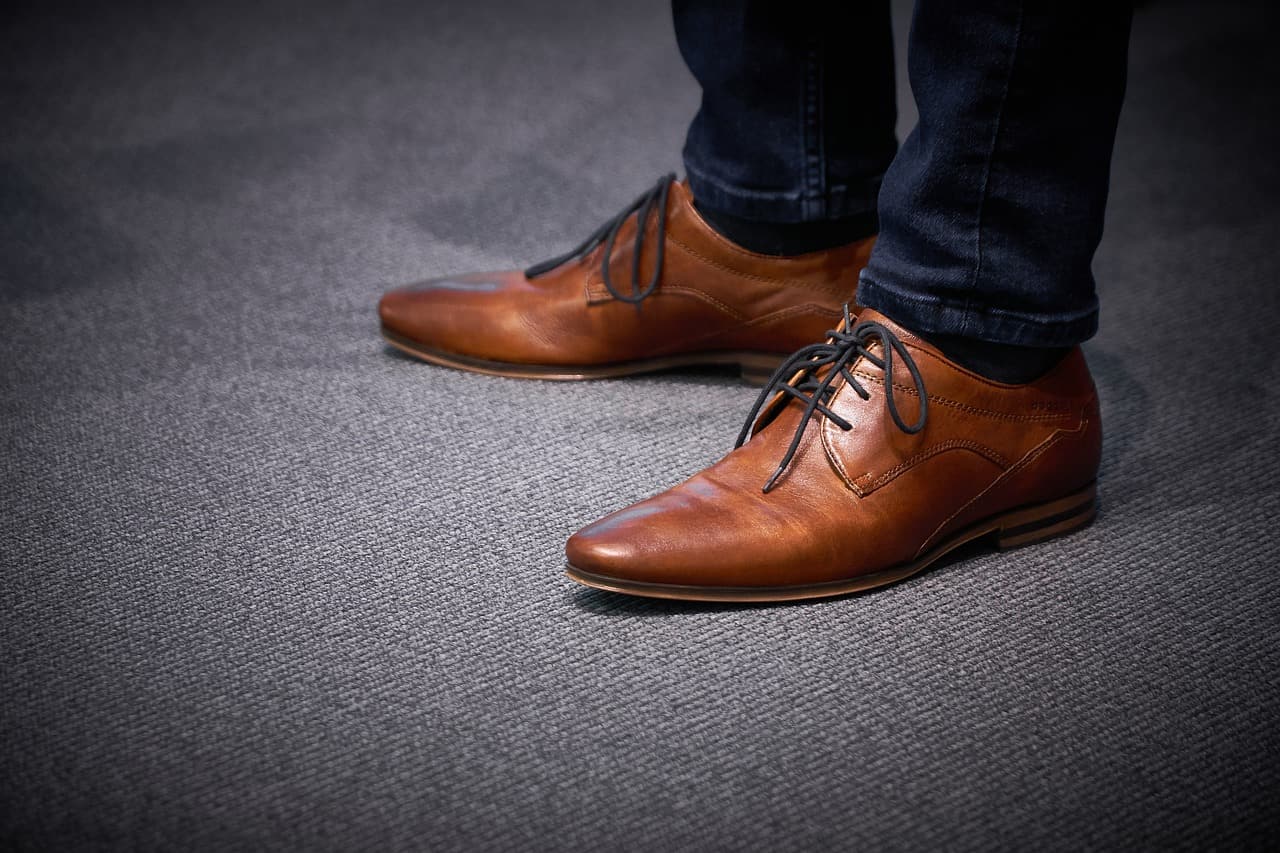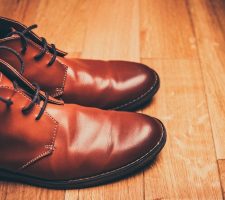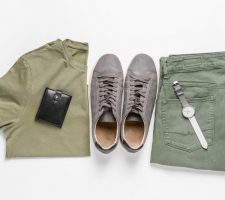A pair of shoes that slips off the heels not only makes you walk awkwardly, it can harm your feet and cause a lot of discomfort.
Luckily, it’s much easier to fix shoes that are a bit too big compared to ones that are too tight. Below, we explain what causes heel slippage in shoes, why it’s bad for your feet and how to keep men’s shoes from slipping off the heel.
What Is Heel Slip and Why Is It Bad?

If you wear shoes that are a tad too big for your feet, you’ll find that your heel constantly pops out of the shoes when you walk, squat, jump and make other movements. This is called heel slip or slippage.
Heel slip occurs because the shoes are not hugging your feet snugly. There’s some room left for your feet to move around.
Depending on how severe the heel slip is, it can make walking and other movements such as jogging difficult and awkward.
Heel slip can also cause other problems.
- Blisters and chafing. As your heels constantly rub against the back of the shoes, it causes chafing. This can cause some pain and discomfort especially when you are walking. If you don’t fix the problem, the constant friction can lead to blisters.
- Poor foot support. A well fitting shoe hugs your foot snugly, ensuring proper support when you are up and about. If your heel is slipping, your feet are not getting adequate support. If you walk a lot, this can lead to other problems such as foot, knee and back pain. These issues can be a lot worse if you run or play sports in shoes with heel slip.
- Heel slip also wears out your shoes faster.
- For activities like sports, running and hiking, shoes with heel slip can seriously affect your performance. You’ll find that you cannot walk or run as fast as you should. It also increases the risk of injury.
4 Reasons Why Your Heels Are Slipping Out Of Shoes
The main reason for heel slip is that the shoes are too big for your feet or they are not snug enough. This leaves extra room in the shoes, causing your heels to move instead of being held in place.
Buying the wrong sized shoes is the most common cause of the mismatch between your shoes and feet, but there are other possible causes.
1. You Bought The Wrong Size
Heel slippage is usually a sign that your shoes are half a size or a size too big. The extra length leaves some space between your heel and the back of the shoe.
It could also be that your feet have gotten smaller and now your old shoes no longer fit you snugly. Yes, feet can become smaller because of age, disease or weight changes.
An easy way to tell if your shoes are too big is to check how much room there is at the front. For dress shoes, there should be around half an inch from the tip of your longest toe to the tip of the shoe.
If it’s longer, the shoes are too big.
For running shoes, there should be about a thumbs width of empty space at the end of the shoe.
Another way to check if your shoes are too big is sticking a finger down the back of the shoe (make sure the laces are properly tied). Your finger should fit, but with some resistance. If it goes in too easily, that means your heel is also slipping up and down when you walk.
2. The Shoes Are Too Wide
You may have bought the right shoe size, but they still feel loose and your heels keep coming off. The problem could be the width of the shoe.
Most men’s shoes are made in a standard width (D). But if you have narrower than average feet, a D width shoe can cause heel slippage.
See if you can find B (narrow) or A (extra narrow) width shoes.
Another possibility is that you got extra-wide shoes without realising it. If your feet have normal width, then wide (2E) or extra-wide (4E) shoes will be too big for your feet and will cause your heels to slip.
3. Shoe Design Doesn’t Match Your Foot Anatomy
You may have bought shoes that are the right size and width, but they still don’t fit snugly around the heel.
The problem could be the design of the shoe. For instance, I have some loafers with a low profile design. Because the back of the shoe is low, it doesn’t fully hold my heels in place, causing some slippage when I walk.
Check the design of your shoes, particularly around the heel area. If the rest of the shoe feels fine, except the heel, it’s probably a design issue.
4. You’ve Not Laced The Shoes Properly
Before you chuck away your shoes and get new ones, check if the problem is the lacing. Shoes that are not laced tightly enough can cause heel slip, even if they are the perfect size and width.
There’s a specific way to lace shoes that reduces or eliminates heel sleep. In fact, there are lacing techniques for different purposes such as lifting the toebox, widening the shoe, relieving pressure on the arches and so on.
How To Fix Shoes That Slip Off Heels
Get The Right Shoe Size & Width
Even if you know your shoe size, it’s a good idea to actually test shoes before you buy them. This is especially important if it’s been some time since you bought new shoes.
Either get your feet measured before buying new shoes or test the shoes. Most high-end stores that sell men’s shoes also offer free foot sizing.
You want your new shoes to feel comfortably snug — not too tight that they pinch your feet and not too loose that there’s some foot movement or heel slip when you move.
Wear Thick Socks
You can reduce heel slippage by wearing thicker socks. This creates a tighter fit and reduces foot movement inside the shoe.
If you don’t have thick socks, wearing two pairs of socks also works.
Try Shoe Inserts
There are various kinds of shoe inserts that can keep shoes from slipping off your heels.
Try using the insoles from your sports shoes. Sport shoe insoles tend to offer better heel support. They have a more contoured design (a heel cup) that holds your heel in place and keeps it from slipping.
You can also get new insoles and place them on top of the current ones. Make sure you find insoles that offer lots of cushioning (gel or memory foam insoles are great) as well as heel support.
Heel grips are another option. These are soft inserts that attach to the back of the shoes on the inside and close the gap behind your heel. They are very effective at preventing heel slip. They also reduce rubbing and chafing.
You can also get heel cup inserts. These provide dedicated support and cushioning to your heels. They not only improve heel grip, they can also help reduce pain associated with plantar fasciitis.
Another option is toe pads or shoe fillers. These inserts are designed to fill the empty space at the front of your shoe, which creates a tighter fit and reduces heel slip.
Learn How to Tie A Heel Lock
A heel lock is a lacing technique that tightens the heel of the shoe to prevent slipping. Many shoes, especially running shoes, have dedicated heel lock eyelets.
But you can also use the regular eyelets to tie a heel lock. Here’s a video showing how to lock lace a pair of Derby shoes.
A heel lock is especially useful if your shoes are too wide for your feet. It pulls the back of the shoe inwards, tightening it against your heel to stop slipping.
Obviously, the heel lock technique doesn’t work on slip-on shoes. If your shoes don’t have laces, try one of the other methods above.


